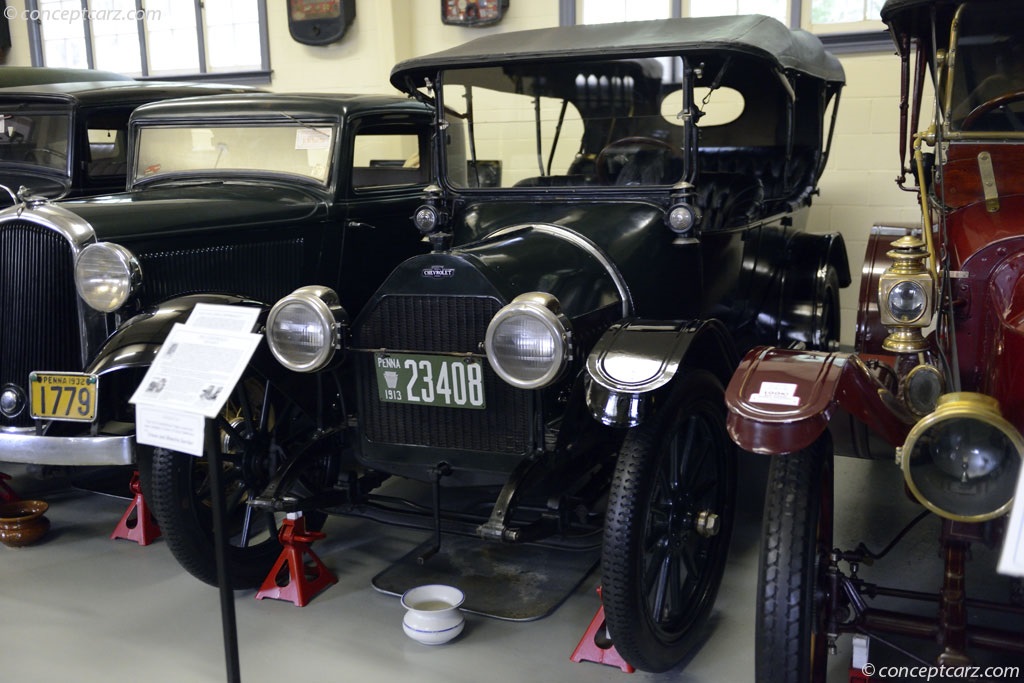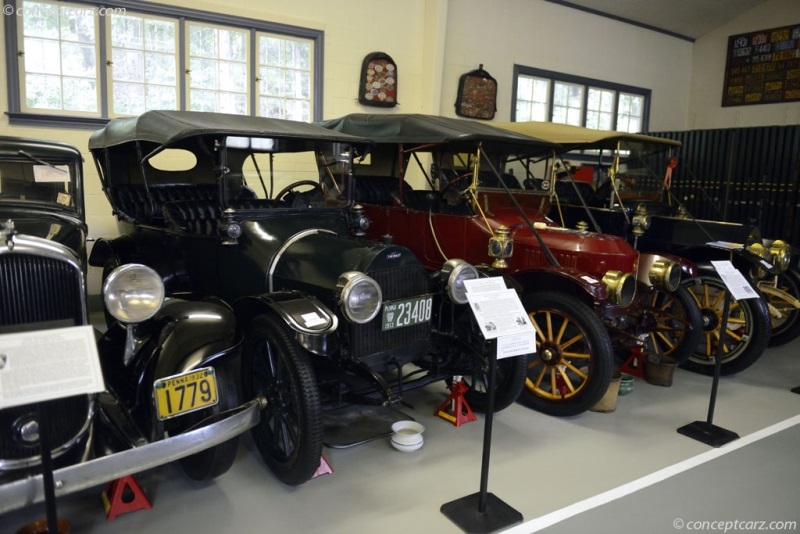Louis-Joseph Chevrolet was born in northwestern Switzerland in 1878, and in 1886 his family moved to Beaune, in the Côte-d'Or département of France. While there, Louis developed mechanical skills and an interest in bicycle racing. He later moved to Paris and then to Montreal, Quebec, Canada, in 1900, where he worked as a mechanic. A year later, he moved to New York City, and within a few years, he was hired by FIAT as a racing car driver, working briefly with The AutoCar Company in Philadelphia before being hired by Buick as a racing driver. 
Tourer
View info and historyThe Buick Motor Company was officially founded in May of 1903 by David Dunbar Buick and quickly gained a reputation for its valve-in-head (overhead valve) engine. Despite its technical prowess, the company was soon in financial distress, rescued by William Crapo Durant, who used the financial and manufacturing resources of Durant-Dort to correct Buick's course. Under Durant's guidance, Buick soon became the best-selling automobile in America and eventually became the basis for an umbrella automobile company called General Motors. Durant consolidated 13 car companies and ten parts-and-accessories manufacturers under the new holding company's control in 1908. The rapid acquisition of so many companies grossly overextended the corporation, and it soon faced a cash shortage, and in the aftermath, Durant was forced out of the company. Capitalizing on the popularity of Louis Chevrolet, William Durant, and Louis Chevrolet co-founded the 'Chevrolet Motor Company' in Detroit on November 3rd, 1911. Investment partners included William Little of the Little Automobile Company, James H. Whiting, Durant's son-in-law Dr. Edwin R. Campbell, and later, R.S. McLaughlin of General Motors in Canada. Just like the Buick automobile, the Chevrolet automobile employed an overhead valve engine. The six-cylinder unit, cast in three banks of two, had a T-head design with a cast-iron block, three main bearings, and solid valve lifters. It was backed by a three-speed selective sliding transmission with a cone-type clutch and floor-mounted gearshift controls. Stopping power was provided by internal expanding brakes at the rear, and wood-spoke artillery wheels were located at all four corners. It was called the Classic Six 'Series C' and offered as a four-door tourer with seating for five at a price of $2,250 in 1912 and $2,500 a year later. The Series C was officially introduced in the fall of 1912 as a 1913 model at the New York Auto Show. 
Tourer
View info and historyThe Chevy Series C, designed by Etienne Planche, rested on a 120-inch wheelbase and came equipped with a full-floating rear axle, drop-forged 'I' front axle, worm and gear type steering, and an English Air starter. The Chevrolet name, in script, could be found on the German silver radiator - the first use of the 'bowtie emblem' logo was in 1914 on the H Series models (Baby Grand and Royal Mail) and the L Series Model (Light Six). The splash aprons, hood, and fenders were all painted black, and a light gray stripe accented the wheels and body side. Standard equipment included a twenty-gallon fuel tank, a two-gallon auxiliary oil tank, a running-board mounted tool kit, a gas gauge, demountable rims, electric lights and self-starter, speedometer and electric speedometer light, a windshield, and a top and top boot. Chevrolet built approximately 2,999 vehicles in 1912 and 5,987 the following year, the same year the Little Motor Car Company merged with Chevrolet. The 1912 and 1913 Chevy Series C were similar, and at some point, the design of the windshield changed slightly, becoming bolted to the swept-back cowl instead of directly to the dashboard. The swept-back cowl was also a unique feature of the circa-1913 Chevys. The all-new Series H was introduced in 1914, joined by the Light Six Series L and the Classic Six Series C.
by Daniel Vaughan | Feb 2021

Tourer
View info and history

Tourer
View info and history
by Daniel Vaughan | Feb 2021
Related Reading : Chevrolet Series C History
The Chevrolet Series C, known as the Classic Six, was the first Chevrolet model produced. It was one of the only models to be produced while Louis Chevrolet, the record-setting Buick race car driver, while still with the company. Louis Chevrolet left the company partly because he wanted to produce large and powerful automobiles, while William Durant wanted a smaller and cheaper vehicle. This disagreement....
Continue Reading >>
Continue Reading >>
Chevrolet
Similarly Priced Vehicles
Chevrolet Monthly Sales Volume
March 2023
398,141
1913 Chevrolet Series C Vehicle Profiles
Recent Vehicle Additions
Performance and Specification Comparison
Price Comparison
Series C Specification Comparison by Year
Year
Production
Wheelbase
Engine
Prices
Related Automotive News

Cobble Beach Concours d'Elegance
The seventh annual edition of the Cobble Beach Concours is two months away. ConceptCarz and New Car Editor, Mark Moskowitz, present this review of the last years event.
The sixth edition of the Cobble Beach Concours celebrated 100 years of General...

GM INVESTS ADDITIONAL $788.7 MILLION IN SPRING HILL MANUFACTURING
Brings total announced investments in Tennessee to %24936.7 million in 2016 Bay City Powertrain operation to get %24118 million to support engine project
SPRING HILL, Tenn. — General Motors will invest %24788.7 million for an all-new, high-efficiency...

CHEVROLET'S ICONIC BOWTIE CELEBRATES 100TH ANNIVERSARY
DETROIT – Chevrolets globally recognized bowtie celebrates its 100th anniversary this year with 25 product launches helping the symbol find new roads around the world despite an origin that is still uncertain.
In 1913, Chevrolet co-founder William...








